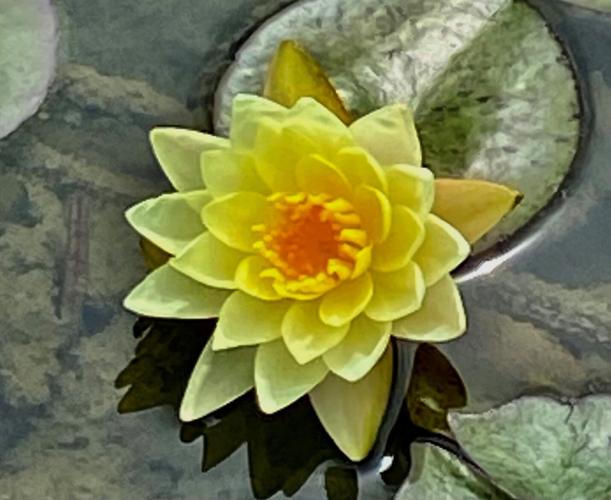Famous French impressionist, Oscar Claude Monet created 250 beautiful paintings of water lilies. Monet imported water lilies from South America and Egypt to adorn his large water garden in Giverny, France.
To Monet “water lilies are an extension of life—without the water, the lilies cannot survive --as I am without art!”
Nymphaea: means water nymph
Around the world, more than 70 species of water lilies belong in the botanical family Nymphaea ssp. Water gardens have been added to many backyards. Water lilies can be added in pots or put in pockets at the side of garden ponds.
If you want a water garden, I recommend you start out small. You can always enlarge a water garden while decreasing its size is difficult.
Two categories–hardy and tropical
Hardy water lilies bloom in day time and close in the evening. Some are called “changeables” which means the flower can change color during the day. Hardy lilies are perennials that are grown from rhizomes that can be divided by removing baby plants or splitting rhizomes. Pots with lilies should be about 18 inches under water.
Tropical lilies bloom during the day and some bloom vibrantly during the night. The thick tropical leaves are up to 8-12 inches and have a jagged edge while hardy leaves are smaller and have a smoother edge. Tropical lilies are annuals in Victoria. They are also propagated by tubers and are more fragrant than hardy waterlilies.
The leaves on waterlilies are called lily pads, which are attached to tubers or rhizomes by a soft, spongy stalk. The stalk can be 2 to 6 feet long and float on the top of the water. The purpose of the stalk is to transport gases from the leaves to the roots. Most people know that these pads are for places for frogs, turtles and other critters to rest. But the real purpose for the large leaves is to collect sunshine for photosynthesis and to exchange gases for the plants.
Water lilies need full sun and grow best in 60 -70 degrees and bloom usually from spring to fall. If the weather in early winter is warm, lilies can continue to bloom. Colors of lilies can be red, pink, purple, yellow, orange or white.
Texas Superstar
Interest in hybridizing water lilies was spreading through the late 1800s and 1900s in England, France and Germany and then to America. The Missouri Botanical Garden became the aquatic Mecca of the U.S. in 1905.
In 1985, Ken London released the “Texas Dawn” waterlily. The “Texas Dawn” received the International Waterlily Society’s 1990 American Award. Then in 2006, “Texas Dawn” was added to the Texas Superstars category and named The Texas State Waterlily.
“Texas Dawn” is a hardy waterlily with bright yellow, upright flowers and a lemony fragrance. In late summer and early fall the flowers may take an attractive pink cast, thus it can be considered a “changeable” waterlily. “Texas Dawn” produces 7- to 8-inch blooms by midsummer and fewer blooms in the fall. The 8-inch round leaves are green with speckled purple tops and solid purple undersides.
Victoria Education Gardens
At Victoria Education Gardens we have a large water garden on the east side of the Officer’s Club. We have some beautiful hardy lilies that bloom yellow, white, peachy pink and red. We also have one Tropical lily, “Panama Pacific” that has a beautiful purple-lavender bloom.
Bring your mom to the Victoria Education Gardens for Mother’s Day and enjoy the sound of the waterfall, critters in the pond and beautiful lilies. You will make her day.








